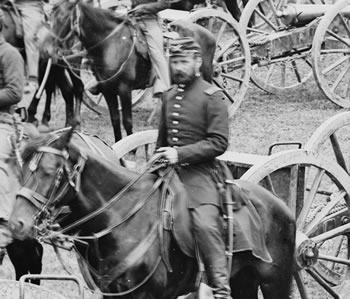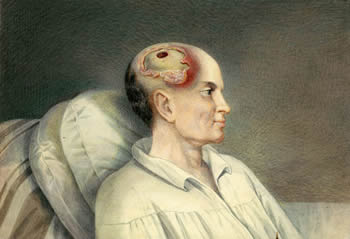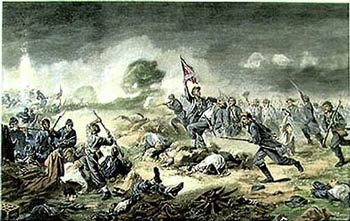Horatio Gibson of the Flying Artillery (1)
5 May 2008
James F. Gibson, of Mathew Brady’s Washington studio, took a lot of photographs as he traveled with the Federal Army on the Virginia Peninsula in early summer 1862. Among these are a number with particular interest in artillery and artillerymen. Well represented among them are Horatio Gates Gibson and his command, the combined Companies C and G of the Third United States Artillery.

Capt. H.G. Gibson, 3d US Artillery, June 1862 (James F. Gibson, Library of Congress)
This is Regular Army Captain Gibson in the midst of his command in June 1862. It’s a detail from a stunning picture of the entire battery of six 3-inch ordnance rifles and the nearly 100 officers and men who were present on campaign. Gibson and many of these were in action from the Peninsula through Antietam and Gettysburg to Appomattox Courthouse with the Army of the Potomac.
Whisky affects him as usual
1 April 2008

Private Patrick Hughes, 4th New York Volunteers (by E. Stauch, 1863, collection NMHM)
I hope Patrick felt as good as his expression suggests … his wound looks awful in this vivid image. He was painted propped up in a bed at Mount Pleasant Hospital in Washington DC in January 1863 shortly before his discharge from Army service. It had been about 4 months since he’d been shot through the head at the Battle of Antietam. There, a Confederate minie ball had bored through the top of his skull and exited from the back, leaving gruesome-looking wounds, but surprisingly little long-term damage.
Private Hughes‘ story offers some small insight into Civil War medicine and gives me a chance to give the soldier and his unit a little air time.
12th Virginia Infantry in Maryland
20 February 2008
The sad story of the officers and men of the 12th Virginia Infantry Regiment of late 1862 is typical for a number of the tattered units of the Confederate Army of Northern Virginia (ANV) who were at Sharpsburg that September.

The Crater (c. 1866, J. Elder)
The Fourth Battalion as it left Petersburg on the 20th of April, 1861, was made up of the flower of the manhood of the Cockade City. After four years of service it had been so decimated by disease, by death, by promotion, and by transfer that it showed scarcely more than a skeleton of the original body. It was the nucleus upon which was formed the famous Twelfth Virginia Regiment, whose banner bore the device of almost every field on which the Army of Northern Virginia grappled with the enemy, from Seven Pines to Appomattox, and whose flag, stained with the smoke of battle and shredded by ball and shell, was never surrendered, but torn into slips and buried in the bosoms, right over the hearts, of the veteran survivors.
